Is there any real relationship between NFL Combine performance and long-term success?
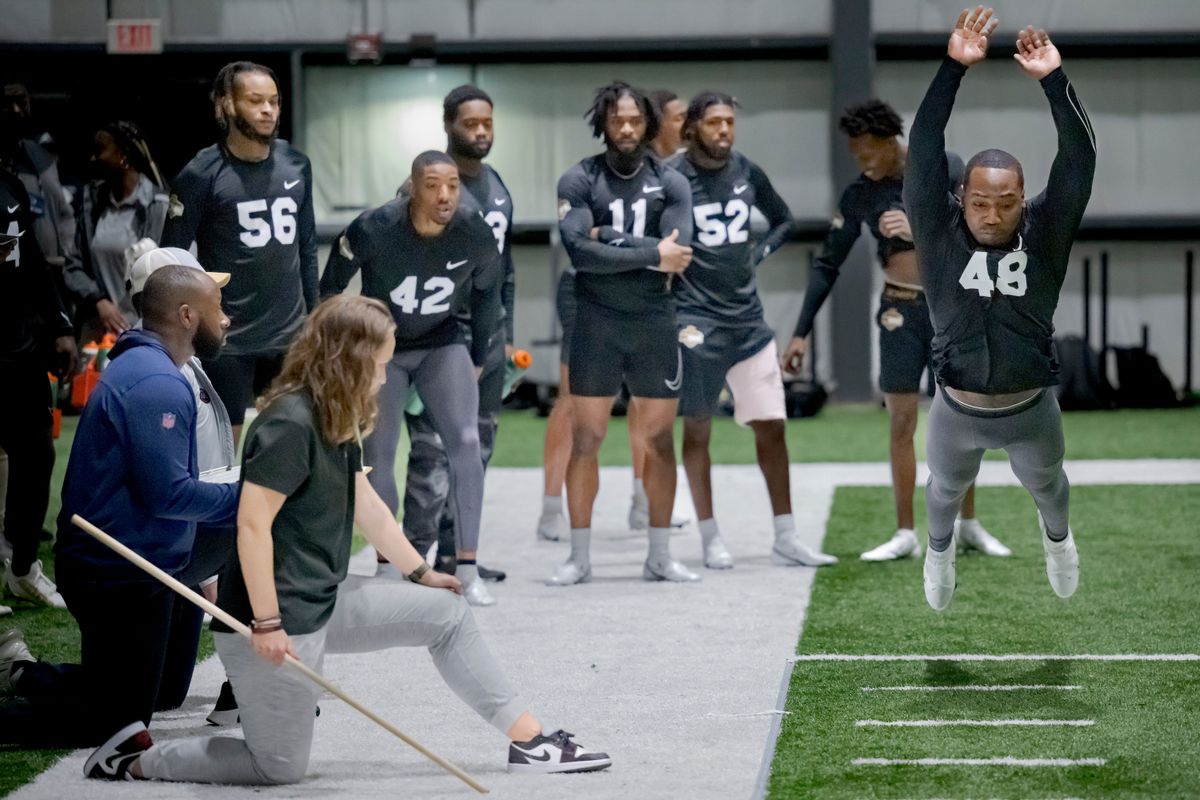 credits: AP
credits: AP Every year around this time, football fans get bombarded with numbers, scores, and facts about a player’s athleticism based on their combine drills. “This guy ran a sub 4.6 40!” “Did you see so and so’s vertical?” “Joey Donuts over there has enormous hands!” Blah, blah, blah, blah, blah. Too often these statistics are given with no context and we’re led to believe that certain players are great because of the numbers they put up. Those drills might not even matter given their position.
Everybody loves to talk about how fast each wide receiver is at the combine, but when was the last time one of those insanely fast receivers actually turned into a star in the NFL, hm? John Ross? Bust. Rondel Menendez? Who? Jerome Mathis was an All-Pro once… as a returner. He had six career catches as a receiver. In general, 40 times don’t really seem to be a factor in predicting a receiver’s NFL future. That being said, there are some drills that have been indicative of certain positions’ success at the NFL level. To determine which drills provide this correlation, we looked at the top-10 players at each position in each drill since 2010, and occasionally further back, thanks to some data from Pro Football Focus.
Obviously, not each of these drills is foolproof. While hand size might be a decent measuring stick when trying to project a quarterback’s future (spoiler alert), we’ve still got guys like Joe Burrow and Derek Carr doing well for themselves. It’s important to remember that these are just trends and as much as we’d like to be able to tell how good a player will be based on their combine scores and measurements, that’s a pipe dream and we’ll never know for sure. With that, let’s talk about it.
Quarterback
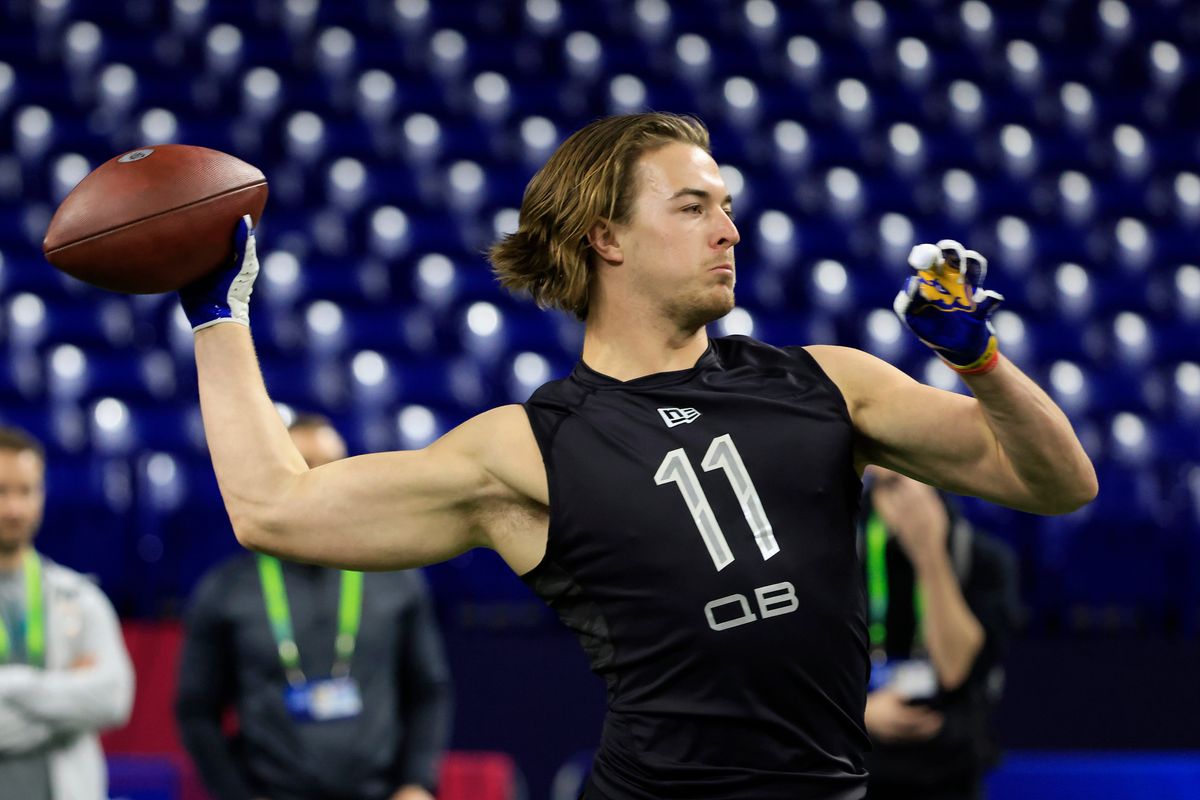 credits: Getty Images
credits: Getty Images While a quarterback’s height is often lauded by NFL owners prior to the draft, it doesn’t actually have much effect on their success at the NFL level. Over the last 15 years, no measurement has had more of an effect on draft status than height, yet it has virtually no effect on their outcome. John Elway obviously loves tall quarterbacks (I have no idea who convinced him Russell Wilson would be a good fit), so the Broncos’ first-round selection of Paxton Lynch and second-round selections of Drew Lock and Brock Osweiler obviously play a big factor in this.
If anything, scouts and analysts should be looking at a player’s three-cone drill and their hand size. Since 2006, quarterbacks that tested well in those two measurements have produced the most WAR of any other metric. As I said before, this doesn’t mean a quarterback with small hands and a poor showing in the three-cone is doomed for mediocrity, but doing well in both those categories certainly doesn’t hurt. Obviously, hand size helps with grip and holding onto the football, but outside of those factors, I’m not sure how much it could seriously help.
Three-cone on the other hand, dictates a quarterback’s ability to quickly change direction. In a day and age where NFL quarterbacks often have to improvise on the fly, being able to evade tacklers and get outside the pocket is a very good indication of a quarterback’s explosiveness. A couple quarterbacks in recent years who’ve done extremely well at the three-cone drill include Carson Wentz, Tyrod Taylor, Andrew Luck, Cam Newton, and Davis Mills. It’s fair to say that each of them have gone on to have successful careers (although Mills hasn’t had much time to establish himself). Justin Herbert also had the fastest three-cone of any QB at the 2020 combine (7.06 seconds), although that generally isn’t an elite time.
Running Back
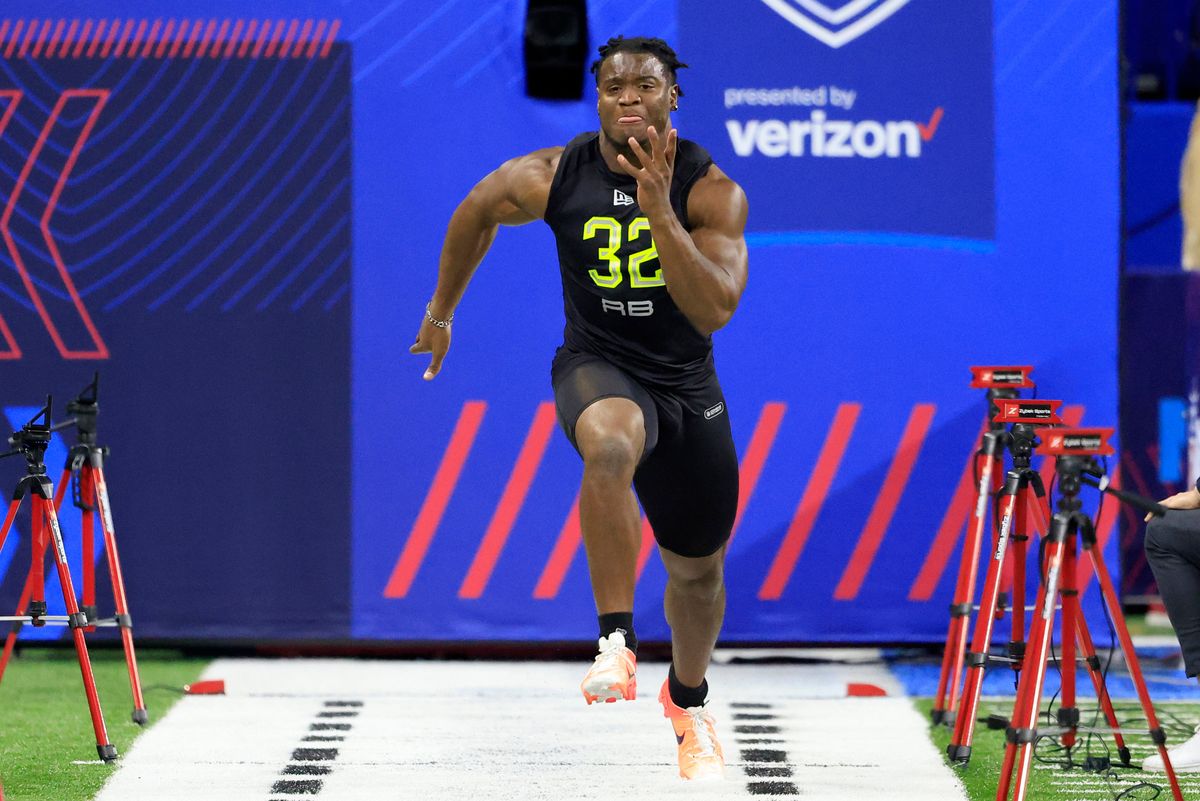 credits: Getty Images
credits: Getty Images Unlike quarterbacks, halfbacks are judged most on their 40 times and broad jumps. Those aren’t bad factors when trying to determine a halfback’s NFL viability, but the best would be three-cone and their 10-yard split during the 40. Honestly, those make sense. The ten-yard split is a pretty simple measurement that pretty well determines a players’ quickness and acceleration. For running backs, this is immensely valuable. Any halfback that can get to full speed quickly is going to be a valuable asset in the NFL. At the very least, they’d be a solid goal line option. Even if they have stones for hands and can’t block to save their lives, they can at least hit designed holes quickly and perhaps break into the secondary before either safety has really stepped up to help. 90 percent of NFL runs go for fewer than 10 yards, so while having great straight line speed is great, being able to get to your top speed quickly is arguably more important.
Three-cone also makes sense. As a halfback, runs aren’t always going to go according to plan. Linebackers will step up to fill gaps. D-linemen will beat their blocks to blow up one side of the line. You get it. That makes being able to change direction on a dime all the more important. While having patience behind the line is a mental aspect many running backs struggle with, being able to not only find new holes when the designed ones are filled, but balance oneself and head in that direction is extremely difficult. Being able to bounce to the outside after an edge defender blows up the C gap, or being able to cut through the B gap when an outside linebacker seals off the edge is what turns a negative play into positive yardage.
Among the halfbacks in recent years that have done well in these two measurements, Jamaal Charles, Christian McCaffrey, Matt Forte, and Aaron Jones are the standouts. Each of these halfbacks has seen immense success in the NFL and were known for their ability to gain positive yardage even when seemingly trapped behind the line of scrimmage. Their explosiveness in between the tackles and ability to navigate anywhere behind the line of scrimmage are what makes/made them so dangerous. A couple other players to have posted solid times in both the 10-yard split and three-cone drill include Ameer Abdullah, David Johnson, Miles Sanders, and Jerick McKinnon. While none of these guys have had the prolific careers of the few I mentioned earlier, they have all had long, solid careers as trustworthy ball carriers...when they’re healthy.
Wide Receiver
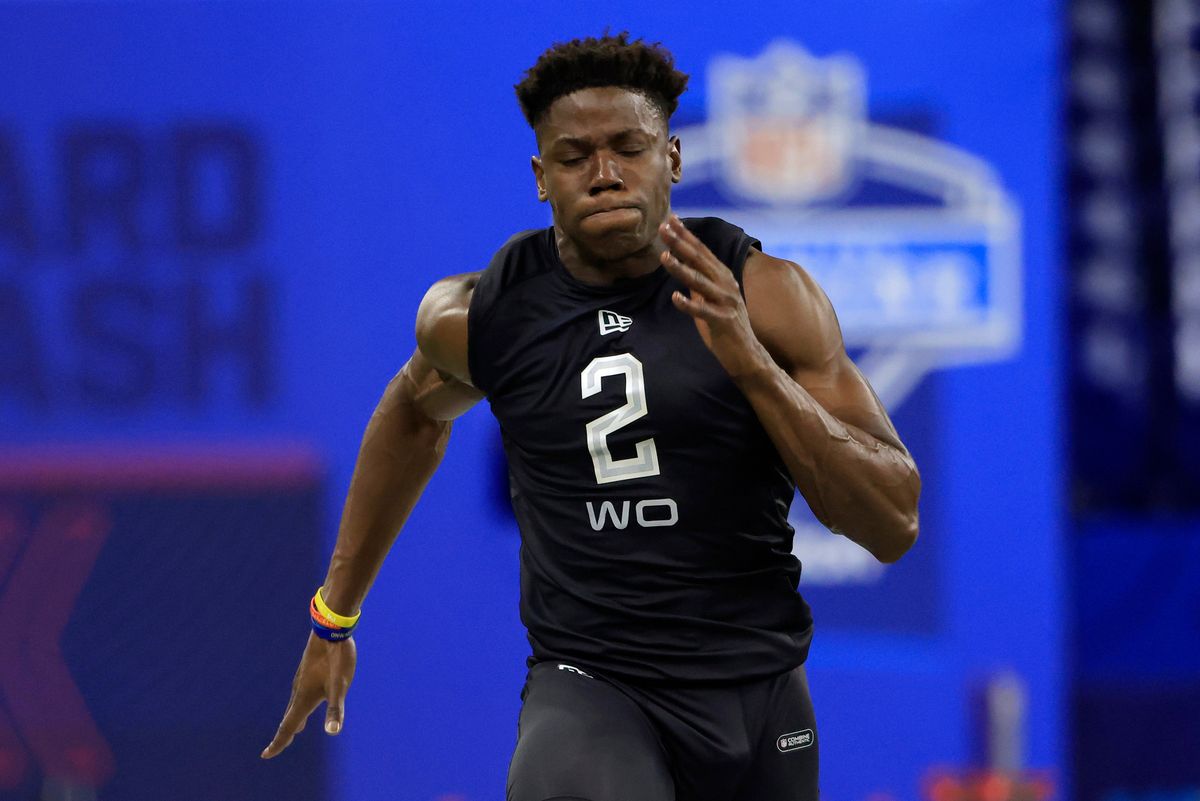 credits: Getty Images
credits: Getty Images Who would’ve thunk, huh? A receiver’s 40 time is what most determines their draft value. If they’re fast, they’re sure to spread the field and make the defense respect the long ball. Funny enough, a receiver’s 40 time actually has a negative correlation on their success in the NFL. That’s not the only drill with a negative effect on WAR in the NFL. The three-cone seems to have a negative effect on NFL viability as well. For some odd reason, a receiver’s ability to change direction and get down the field quickly isn’t a good way of determining whether or not they will be great in the NFL.
In fact, there have been several receivers who have done exceedingly well in the NFL with awful showings in the three-cone at the combine. DK Metcalf, Diontae Johnson, and Deebo Samuel all posted three-cone times greater than seven seconds during the 2019 combine, yet each of them has turned into a valuable NFL commodity. Michael Gallup and D.J. Moore each posted times of 6.95 seconds in 2018. Faster, but still nowhere close to the top times of other wide receivers those same years.
The best drill for determining NFL success is actually the vertical leap. Being able to consistently win 1-on-1's by getting higher than your defender is a huge plus. That accompanied with an ability to get off the line quickly (10-yard split) and big hands are the ingredients for a premiere receiver in the NFL. Sterling Shepard was a receiver who was prolific in all three categories during the 2016 combine. He certainly hasn’t bloomed into a superstar, but has always been a solid option in the passing game. DK Metcalf, Emmanuel Sanders, and Steve Smith are a few other examples of receivers who excelled in all or most of those measurements and wound up having incredible NFL careers. In 2022, North Dakota State’s Christian Watson and Memphis’s Calvin Austin are two receivers that likely won’t go on Day 1 but have incredible upside based on their combine performances. Be weary though, they each posted sub 4.4 40-yard dashes as well. That may sound like a bonus, but history would say otherwise.
Tight End
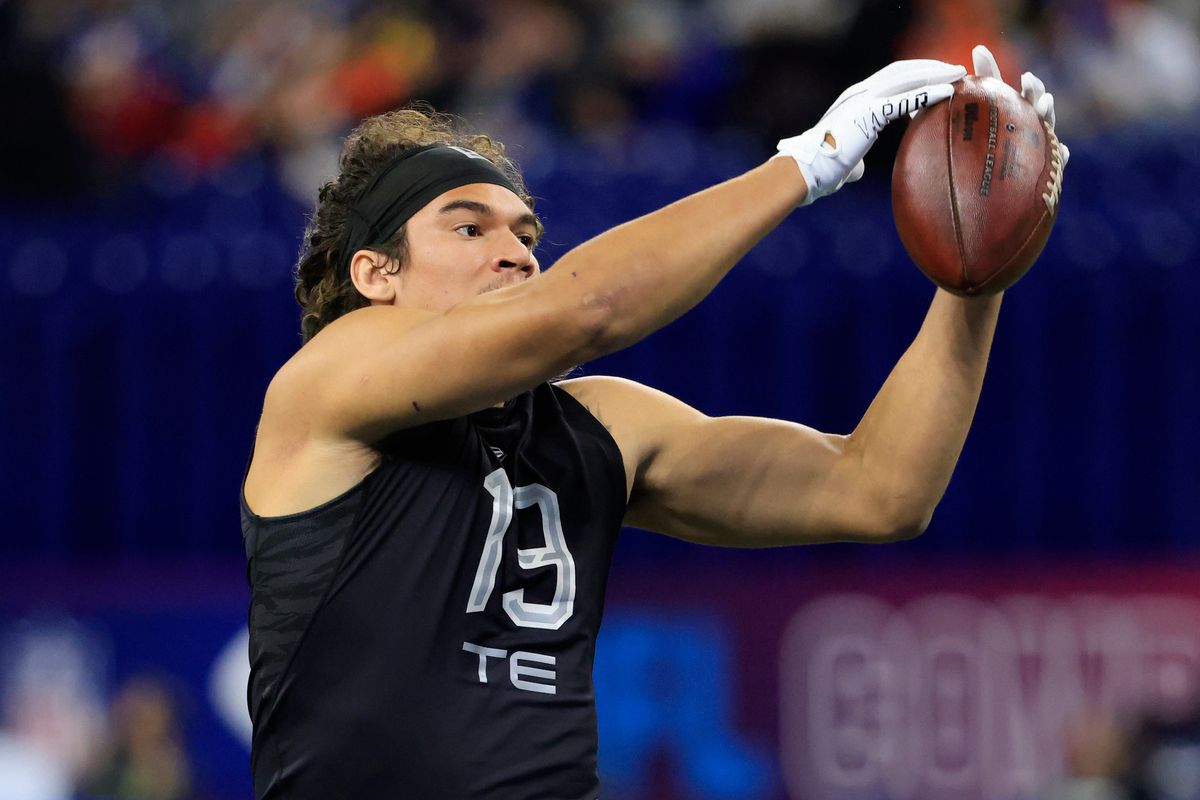 credits: Getty Images
credits: Getty Images For tight ends, you’d think length reigns supreme, but in fact, the three-cone drills and ten-yard split are the most important combine drills to look at when projecting a prospect’s NFL future. The most impressive combine in recent memory for both of these drills belongs to former Penn State Nittany Lion, now-Miami Dolphin Mike Gesicki, who posted a stellar 1.56 10-yard split in the 40 and an absurdly fast 6.76 three-cone time. While no one else in the last decade has come close to Gesicki’s dominance in both categories, other athletes like Jimmy Graham and O.J. Howard have put up similar numbers in the past.
Even more recently, both Noah Fant and T.J. Hockenson were near the top of their draft class in both ten-yard split and three-cone time. Dawson Knox wasn’t too far behind either of them. All three turned out to be solid NFL tight ends, but I guess that’s to be expected of two first-round picks and a third-round selection. Not many tight ends in the 2022 class participated in both the three-cone and the 40-yard dash during the combine. Of all who did, UCLA’s Greg Dulcich and Wisconsin’s Jake Ferguson could be two absolute steals this weekend.
Offensive Line
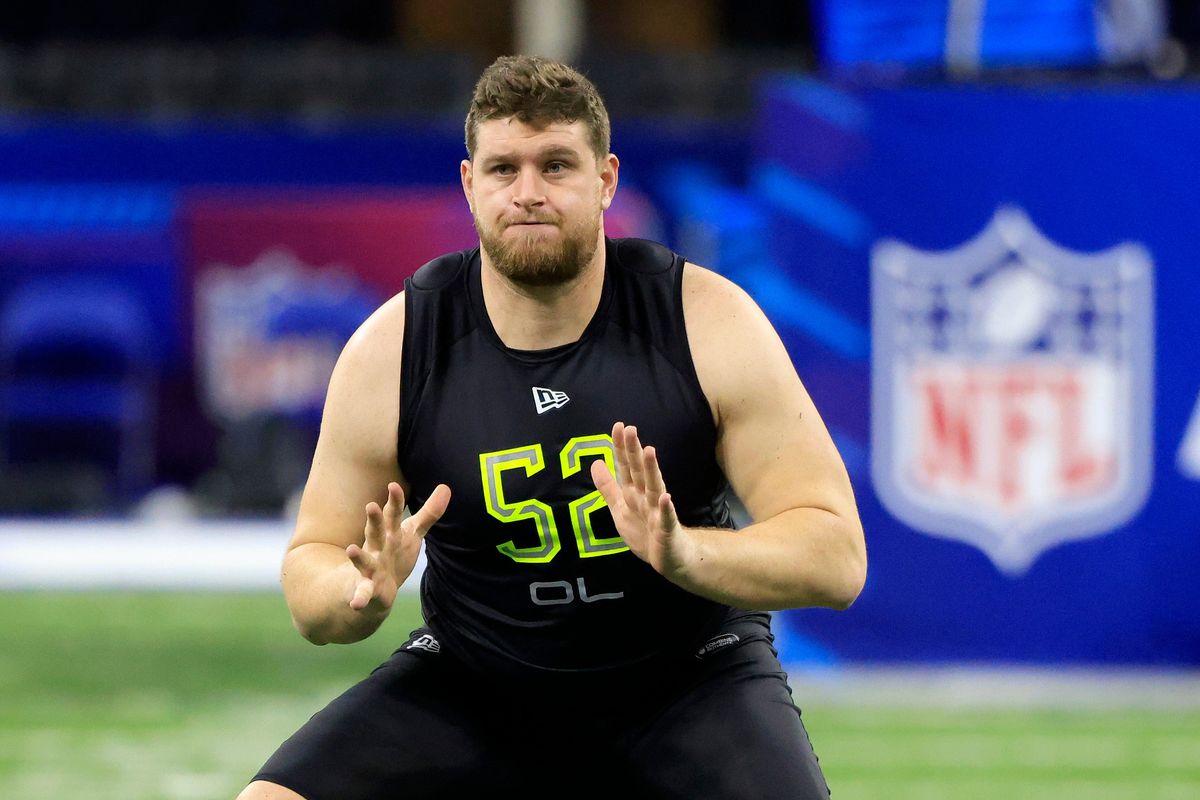 credits: Getty Images
credits: Getty Images Judge me all you want for lumping the offensive tackles in the same group as the interior offensive linemen, but based on the data, there are a lot of similarities between the positional groups when it comes to combine drills and measurements. There are some differences. For example, heavier tackles are often better off than heavier guards and centers. Trent Williams, Marcus Cannon, and Mekhi Becton are just a few of the heavier tackles to have been drafted since 2010 who have gone on to have tremendous NFL careers.
On the interior, the narrative changes a bit. Rather than size, agility is most important. Three-cone and shuttle are both drills that measure agility and change of direction, and those are the drills that have best determined interior O-linemen success. David DeCastro, Ali Marpet, and Roger Saffold are a few of the star guards who thrived in both agility drills, and based on the success rates of these O-linemen, it’s hard to look past Wake Forest center Zach Tom. I know a lot of analysts have talked about his agility and versatility on the offensive line, but based on his combine results, it would be a crime if this man went any later than the second round. He posted the fourth-fastest shuttle (4.47 seconds) of any O-lineman in the draft this year and the third fastest three-cone (7.32). Both of these were faster than any other center who partook in the drills by a longshot. Other O-linemen who tested well in the agility drills include Northern Iowa’s Trevor Penning and Washington State’s Abraham Lucas. Both of them are projected to be mid-first to early-second round picks.
Edge Rusher
 credits: Getty Images
credits: Getty Images For edge rushers, the most important drill is probably what you’d expect. You want your edge rushers to be able to explode immediately and push offensive linemen back into the pocket. You have to disrupt the quarterback’s pocket presence and explosive leg strength goes a long way to making that happen. The broad jump is the best drill in determining that quality.
Since 2010, the best broad jumps from the defensive end/edge position belong to Bud Dupree (138 inches) and Odafe Oweh (134). Oweh has only played one season, but was solid when he played during his rookie season. Other edge defenders to record broad jumps over 125 inches in that span include Myles Garrett, Brian Burns, Randy Gregory, Von Miller, Montez Sweat, and Vic Beasley. That’s pretty good company.
The best broad jumps from this year’s class of edge defenders belong to Florida State’s Jermaine Johnson (125 inches) and UGA’s Travon Walker (tied with Kentucky’s Joshua Paschal at 123 inches). Both of these players are projected to be top-tier NFL talents and both could potentially go in the top-10 of the draft tonight.
Interior Defensive Line
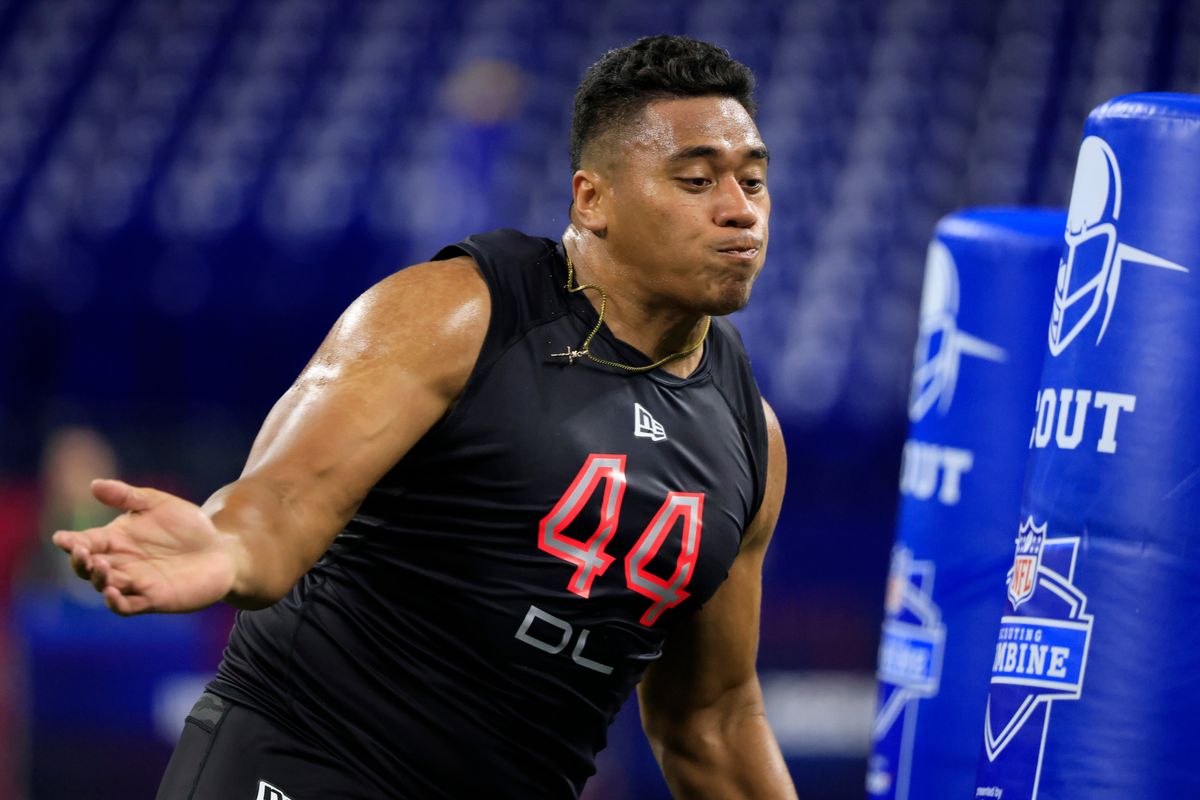 credits: Getty Images
credits: Getty Images Interior defenders are tough because everything points to weight being the most important factor when predicting NFL success… but then there’s Aaron Donald. Donald was small and light for someone at his position. Most people with that type of frame struggle in the NFL, but Donald is the outlier. As much as I would like to say that weight clearly doesn’t matter because of Donald’s success, it would probably be best to view Donald as a freak of nature/one-time occurrence, than to change the narrative entirely. In general, weight is the most important factor. The heavy dudes tend to throw offensive linemen around like it’s nothing. They also tend to do very well against the run. Vita Vea, Dontari Poe, D.J. Reader, Danny Shelton, and Linval Joseph are just a few of the names who weighed in at over 320 pounds at the combine and went on to dominate the NFL (although Reader’s stretch of elite play was short-lived).
Weight seems like such an arbitrary figure though. There has to be something else at play. For the defensive tackle position, the drill with the largest positive effect on outcome is the vertical jump. Poe, Reader, Joseph, Jonathan Allen, Sheldon Richardson, Aaron Donald, Geno Atkins, Robert Nkemdiche, Ndamukong Suh, Sheldon Rankins, and Javon Hargrave all posted verticals of 29 inches or better. Basically, if they’re heavy but still have good explosiveness in their legs, they have a better chance of being great in the NFL.
This year, the interior D-lineman that falls into these categories most would be...lo and behold, UGA’s Jordan Davis (341 pounds, 32 inch vertical). Aside from Davis though, the next best D-lineman based solely off their combine results would be Michigan’s Chris Hinton (305 pounds, 31.5 inch vertical). He’s not as heavy as I, or many NFL teams would like, but you can always put on weight. We see it happen all the time in the NFL. It’ll be difficult, but Hinton’s explosiveness should be enough for a few teams to want to take a flier on Hinton on Day 2 or early Day 3.
Linebacker
 credits: Getty Images
credits: Getty Images Linebacker is widely considered one of the most athletic positions in football. You have to be a well-rounded athlete in order to succeed. So, it makes sense that the drills with the most impact on a player’s success would be the broad jump, vertical, and bench press. Surprisingly, 40 time actually has a negative correlation with NFL success. Take that as you will. Apparently, it doesn’t really matter if your linebackers are fast or slow. As long as they can fill gaps and can anticipate plays well they can be slow as dirt and it won’t matter.
Jamie Collins in 2013 was the most exemplary display of this data. He wasn’t the fastest (4.64 40-yard dash), but he put up a respectable 19 reps on the bench and recorded an outstanding 139 inch broad jump (best of the class) and 41.5 inch vertical (best of all LBs in class). He turned into a Pro Bowler and was a vital part of New England’s Super Bowl XLIX victory. Ryan Shazier recorded similar numbers — not the fastest, but phenomenal figures in the broad jump (130 inches), vertical (42 inches), and bench press (25 reps).
This year’s draft class actually does feature someone who fits almost this exact narrative and he’s someone many analysts believe won’t go until late Day 2. Wyoming’s Chad Muma posted a 4.63 40-yard dash, 27 reps on bench, a 40 inch vert, and a 129 inch broad jump (second-best among LBs). Muma’s scouting report indicates that he’s one of the best pure tacklers in this year’s draft. He also possesses incredible play awareness. That sounds a lot like Collins and Shazier to me. Whichever team drafts him will likely be very happy a few years down the line.
Cornerback
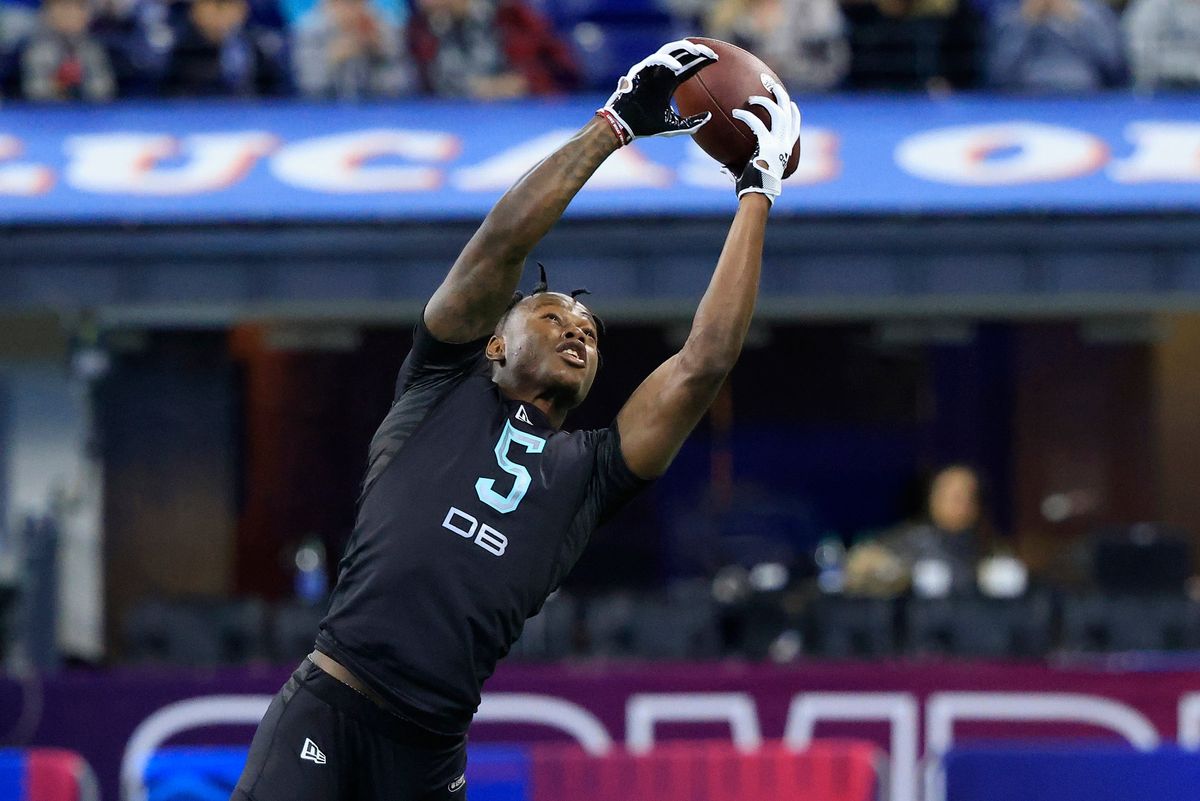 credits: Getty Images
credits: Getty Images Of all positions, cornerback is the least predictable based on combine results. No one drill has too much an effect on NFL success. If anything though, we can use a similar approach to the one we used for linebackers. The largest negative effect on cornerback WAR is 40 times (just to a much lesser extent than linebackers). The largest positive effects on cornerback WAR are broad jump, bench press, and vertical (once again, to a much lesser extent than linebackers). Byron Jones, Xavier Rhodes, and Jalen Ramsey all fit this data set particularly well. Patrick Peterson is one athlete who broke this trend though. He posted a phenomenal 4.31 40-yard dash time and was still one of the best corners in football for most of his career.
This year, there weren’t many cornerbacks who participated in all four of these drills. Of the corners who participated in at least three, Arizona State’s Chase Lucas could be someone to look out for. Since 2017, he leads the Pac-12 in forced incompletions, and although he has some problems with facing physical wideouts, he could be worth a flier in the seventh round based on his physical attributes and ballhawking capabilities.
Safety
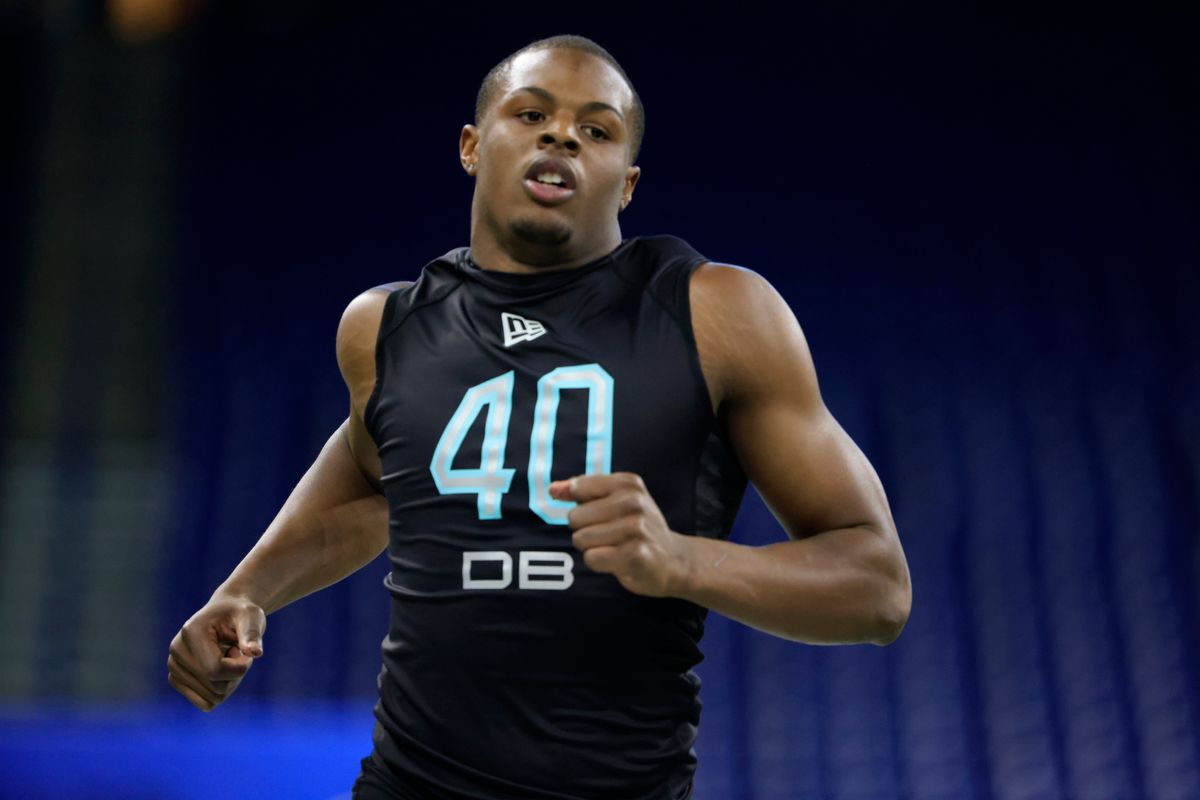 credits: Getty Images
credits: Getty Images For safeties, once again, all that matters is bench, vertical, and broad jump. Everything else, including height and weight actually have a negative effect on a player’s WAR in the NFL. With that in mind, all that matters seems to be explosiveness and strength — AKA how hard can you hit an open receiver right after the catch and can you match a receiver’s high point on jump balls? A couple strong corners who succeeded in these drills were Bobby McCain, Devin McCourty, Eric Berry, Eric Rowe, and Kareem Jackson.
The 2022 safety class features a variety of strong candidates, none more prolific than Notre Dame’s Kyle Hamilton. Several analysts and experts have become weary of Hamilton’s ability to succeed in the NFL after he posted an abysmal 4.59 40-yard dash, but based on the data, that shouldn’t matter much. Hamilton still left the combine with the second-longest broad jump of all safeties (131 inches) and the third-best vertical (38 inches). Other safeties to look out for include Baylor’s JT Woods and Georgia’s Lewis Cine.
